Pressure-treated (PT) wood is treated with chemical preservatives to protect the wood from insects and rot. Although this treatment protects the wood, it also makes it more difficult to work with than standard lumber.
Regular metal screws are prone to corrosion when used with treated lumber, but several types of screws are available that resist corrosion while still providing a strong hold.
Read on to discover the following;
- What Kind of Screws Can Be Used in Pressure-Treated Wood?
- Why You Can’t Use Regular Screws on Pressure-Treated Wood
- PT Wood Fasteners: What are Your Options
- Choose Fasteners Based on the Type of Pressure Treated Wood
- What Kind of Screws Can Be Used in Pressure-Treated Wood?
- Self-Drilling Screws Vs. Screws that Need Pre-Drilling
- Tips for Dealing With Pressure-Treated Wood
What Kind of Screws Can Be Used in Pressure-Treated Wood?
Screws made from stainless steel, silicon bronze, and hot-dipped galvanized steel are the best deck screws for fastening pressure-treated wood. All three resist corrosion,
.33301 and stainless steel and silicon bronze are the most expensive choices. Hot-dipped galvanized screws are more economical than these other options, but they’re still more costly than standard galvanized screws or untreated steel screws.
Why You Can’t Use Regular Screws on Pressure-Treated Wood
Pressure-treated wood is infused with chemicals and preservatives that helps the wood resist rot and decay. The chemicals can seep out of the wood over time, and this can cause corrosion in certain types of screws which will ruin the look of your patio. You must use screws rated for use with pressure-treated wood so they don’t rust and fail.
Furthermore, treated lumber is often still damp when it’s delivered to your home or project site, which can cause problems when you’re working with it. As the wood dries, it shrinks slightly in size, causing fasteners to loosen or pulling them out completely.
To account for this problem, you should use screws that are at least 1 1/2 inches long to ensure they penetrate entirely through the joist or stud and into the supporting structure.
PT Wood Fasteners: What are Your Options?
Here are some things you can use with pressure-treated lumber:
- Hot dipped galvanized screws (recommended)
- Galvanized screws (not recommended)
- Stainless steel screws (recommended)
- Zinc-plated screws (not recommended)
When choosing fasteners for pressure-treated lumber, don’t forget about nails. Here are two options for nails:
- Hot dipped galvanized nails (recommended)
- Electro-galvanized nails (not recommended)
Stainless Steel
Stainless steel screws hold up well in pressure-treated wood and won’t rust as quickly as galvanized screws. Stainless steel comes in various grades and finishes, but 18-8 stainless steel is one of the most commonly used types. It’s a good all-purpose material that has excellent corrosion resistance.
Hot-dipped Galvanized Screws
The best fasteners for most pressure-treated lumber are hot-dipped galvanized (HG) screws that meet ASTM A 153 specifications. HG screws have a coating consisting of zinc and a small percentage of aluminum. These are less likely than regular galvanized fasteners to react with treated lumber because they contain less iron and more aluminum than galvanized screws do.
Choose Fasteners Based on the Type of Pressure Treated Wood
The best fastener for your project depends on the type of pressure-treated lumber you’re using and how it was treated. In general, ACQ-treated lumber is pressure treated with alkaline copper quaternary compounds. CA-B and CCA-C are also used on pressure-treated lumber; these chemicals contain chromium and arsenic.
CCA lumber is no longer available for residential applications, so you can probably assume it’s a commercial job if you’re working with it. ACQ and CA-B are the most common types of treated lumber today.
The chemical treatment process helps to make pressure-treated lumber resistant to rot, pests, and fungus. It also helps to protect the integrity of fasteners like screws and nails. However, not all fasteners are compatible with all types of pressure-treated lumber because the chemicals react to some metals.
Using an incompatible fastener can cause corrosion, weaken the material, or even create a safety hazard over time.
Fasteners for ACQ-Treated Lumber
Use stainless steel fasteners or hot-dipped galvanized fasteners for most applications when working with ACQ-treated wood.
Fasteners for CA-B Lumber
If you’re using a lumber product containing arsenic, such as CA-B or CCA-C, the fasteners need to be stainless steel or specially coated for use with arsenic-treated wood.
Self-Drilling Screws Vs. Screws that Need Pre-Drilling
Self-Drilling Screws
Self-drilling screws are designed for fastening projects where predrilling holes is not practical or time-efficient.
They have a drill bit tip that allows them to be screwed directly into the wood without a pilot hole, and the hanger portion of the screw will enable them to support heavyweights like those often found in pressure-treated lumber projects like decks and fences.
Self-drilling screws come in hot-dipped galvanized steel and stainless steel versions and can be used with PT wood.
Screws that need pre-drilling
When using nonferrous fasteners such as brass or copper, be aware that they require pre-drilling due to their brittleness. You can also use plastic fasteners such as polyethylene washers, but pre-drilling is also necessary for these under certain conditions.
Tips for Dealing With Pressure-Treated Wood
If you’re going to use screws with treated lumber, here are some tips:
- Use screws that are galvanized or stainless steel because they will not rust when exposed to moisture.
- Use screws that are the same size or longer than the thickness of the treated lumber post. You don’t want the screw to pull out of an end piece.
- Use screws that have coarse threads and a sharp point. Don’t use screws with fine threads or blunt points because they won’t hold as well in pressure-treated lumber (which is dense).
- Choose screws that are long enough to penetrate the pressure-treated wood by at least three times their diameter. The longer the screw, the more stable the joint will be. If you have several layers of lumber or plywood, drive the screws all the way through the top layer into the next layer. Use an electric drill with a screw tip attachment for faster installation.
Lastly, drill pilot holes for each screw before driving them in. Don’t force a screw into untreated wood without a proper pilot hole, and this becomes even more important when driving screws through treated lumber because it’s hard to penetrate.
Last Words
There are many different fasteners available for use when building projects with pressure-treated lumber. Knowing which ones to select can be confusing. Always refer to this guide before projects to make an informed decision.

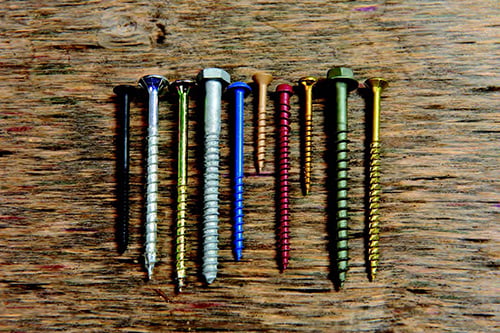
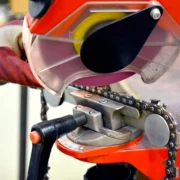
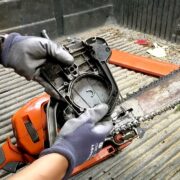
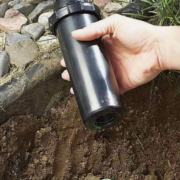
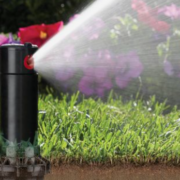
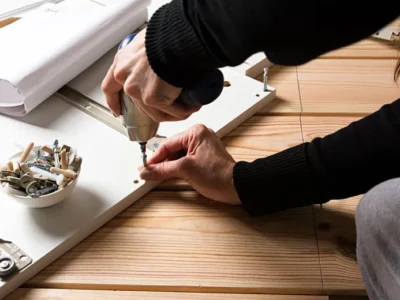
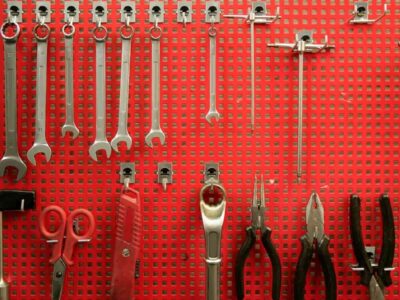
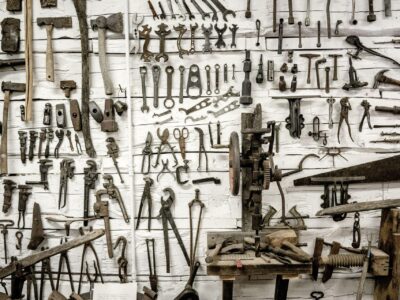
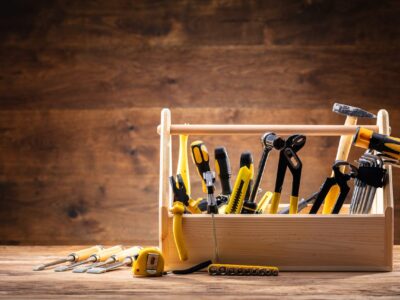



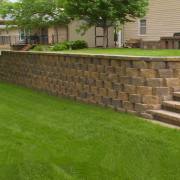
Do stainless steel screws come in black?